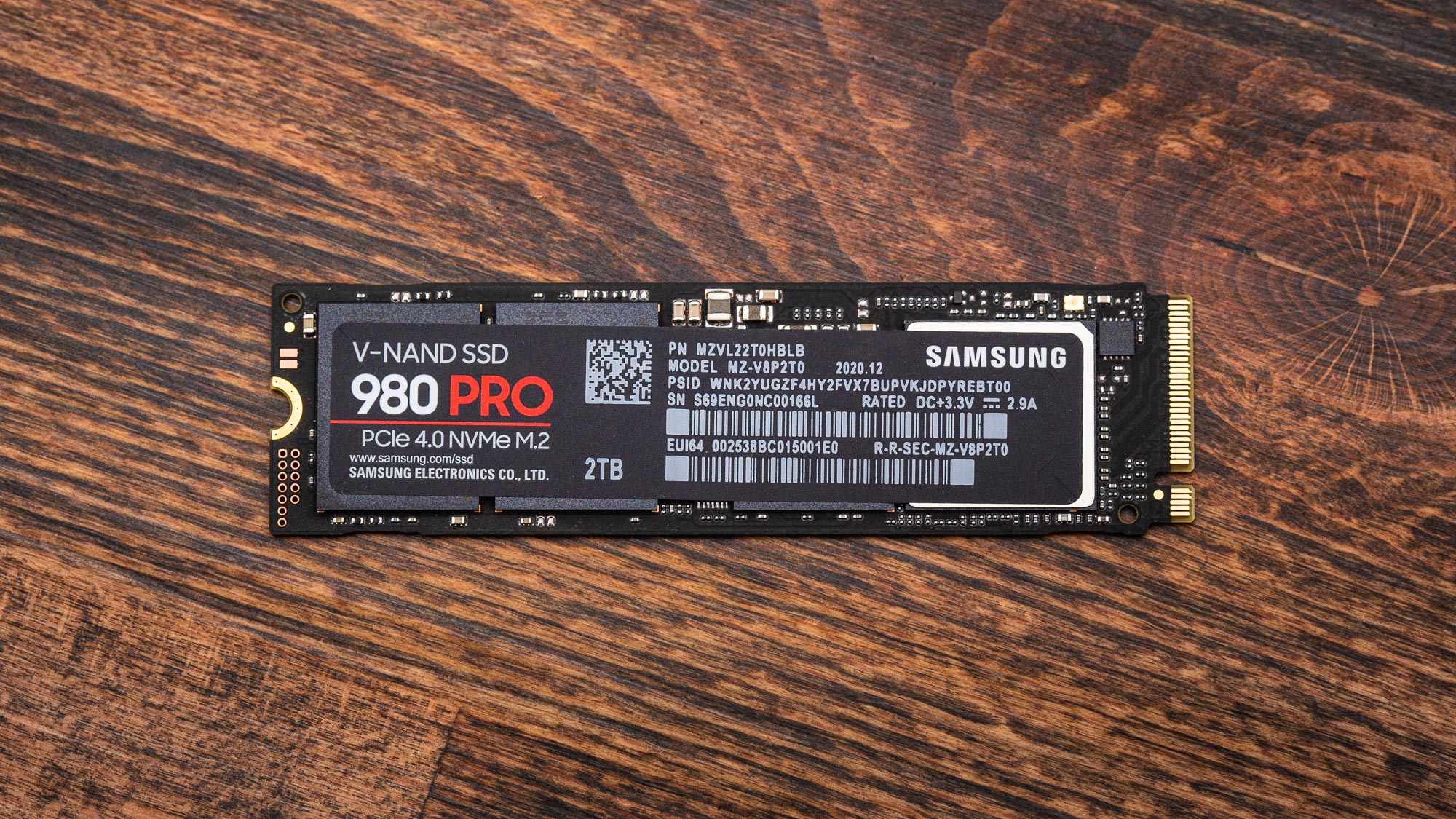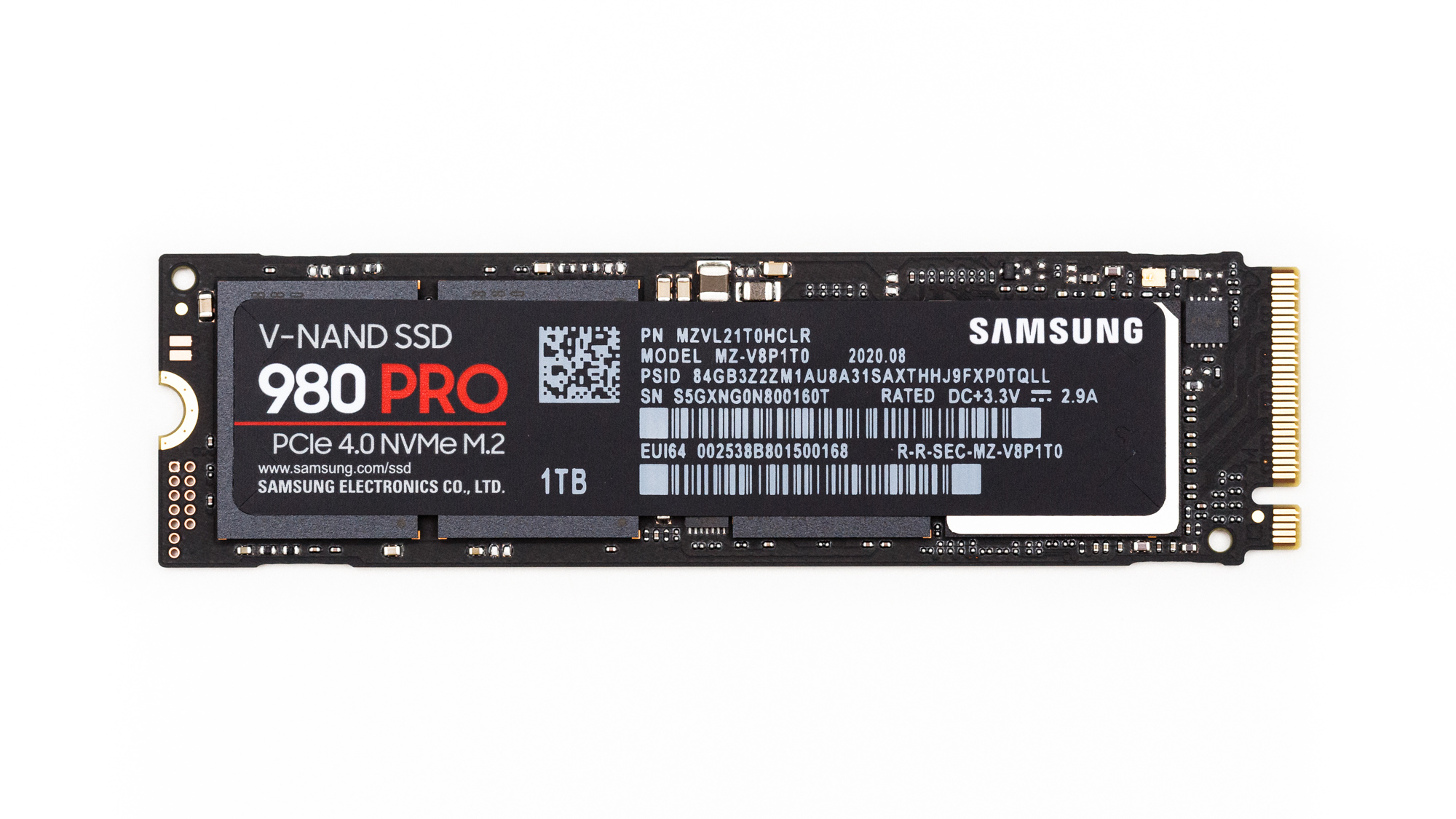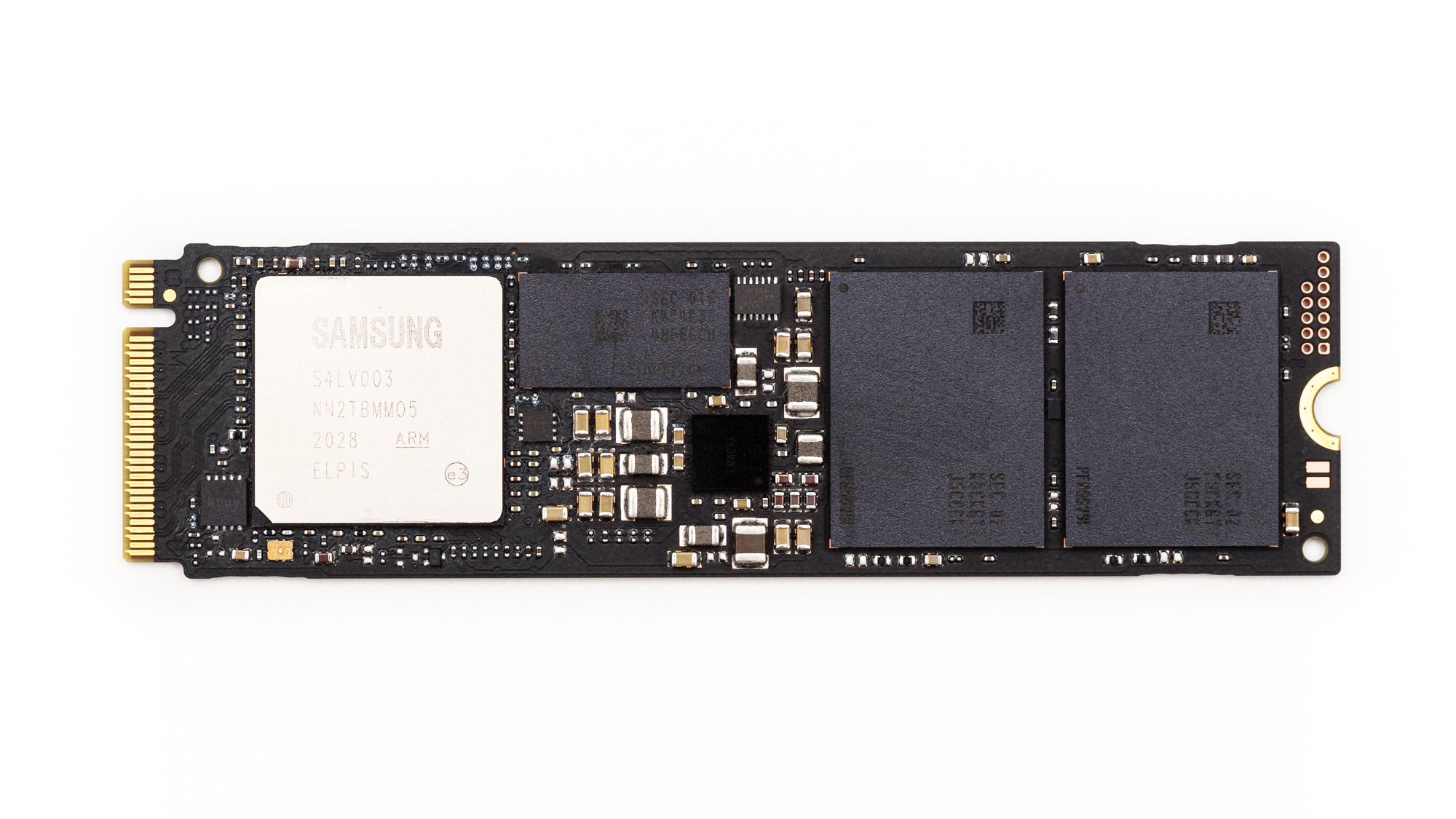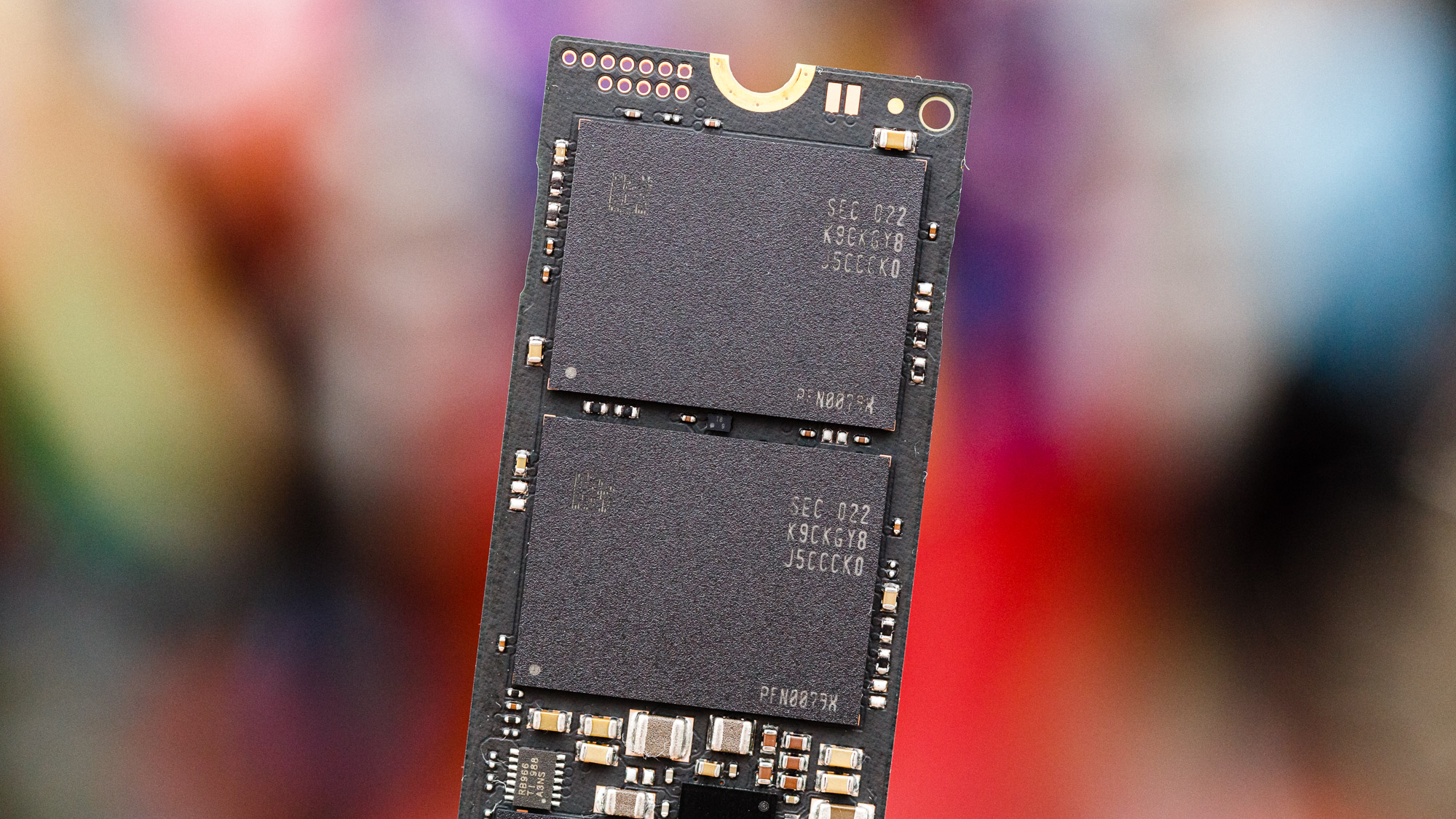Tom's Hardware Verdict
Samsung’s 2TB 980 Pro delivers some of the fastest performance we have seen from a Gen4 SSD. Although costly, Samsung’s 980 Pro is a solid pick for those looking for one of the best SSDs you can get your hands on.
Pros
- +
Responsive PCIe Gen4 performance
- +
Sustained write speeds
- +
Hardware-based AES 256-bit encryption
- +
Aesthetically pleasing
- +
Software package
- +
5-year warranty
Cons
- -
Average endurance ratings
- -
Costly
- -
TurboWrite SLC cache not as large as competitors
- -
No 4TB option
Why you can trust Tom's Hardware
Update 2/17/2021: We have updated this article with new testing for the 2TB Samsung 980 Pro M.2 NVMe SSD on page 4.
Original Review published 9/22/2020:
Samsung’s 980 Pro is set to redefine the company’s product line up, and perhaps the entire high-performance market, with a combination of the speedy PCIe 4.0 interface paired with a new controller and flash, all of which delivers brutal performance in many types of applications. That isn't too surprising given the drive's rated speed of up to 7/5 GBps of sequential read/write throughput and 1 million IOPs.
For the first time, the company’s flagship Pro series SSD doesn't come with 2-bit MLC flash. Instead, the 980 Pro uses Samsung’s latest 3-bit TLC flash to reduce costs, essentially making it the high-end evolution of the more economical 970 Evo Plus series. But, with a very robust PCIe 4.0 x4 NVMe controller under the hood, the 980 Pro still ensures efficient and responsive performance along with AES 256-bit security for both gamers and prosumers alike.
Aside from its slower sustained write speed than the previous-gen 970 Pro, Samsung’s 980 Pro is the fastest flash-based SSD we’ve laid our hands on. The 980 Pro proves that even while Samsung no longer uses 2-bit MLC flash in the design, its newest 1xx-layer layer V6 V-NAND 3-bit TLC scales to new heights and brings impressive performance to the table.
Samsung’s 980 Pro is the SSD to get if you’re building a high-end gaming or work machine with bleeding-edge performance in mind. The 980 Pro also doesn’t cost too much more than Phison E16-based SSDs, like Seagate’s FireCuda 520 or Sabrent’s Rocket NVMe 4.0, making it surprisingly competitive against other prosumer-class drives at checkout, too.
Specifications
| Product | 980 PRO 250GB | 980 PRO 500GB | 980 PRO 1TB | 980 PRO 2TB |
|---|---|---|---|---|
| Pricing | $89.99 | $149.99 | $229.99 | $429.99 |
| Capacity (User / Raw) | 250GB / 256GB | 500GB / 512GB | 1000GB / 1024GB | 2000GB / 2048GB |
| Form Factor | M.2 2280 | M.2 2280 | M.2 2280 | M.2 2280 |
| Interface / Protocol | PCIe 4.0 x4 / NVMe 1.3c | PCIe 4.0 x4 / NVMe 1.3c | PCIe 4.0 x4 / NVMe 1.3c | PCIe 4.0 x4 / NVMe 1.3c |
| Controller | Samsung Elpis | Samsung Elpis | Samsung Elpis | Samsung Elpis |
| DRAM | LPDDR4 | LPDDR4 | LPDDR4 | LPDDR4 |
| Memory | Samsung 1xxL V-NAND TLC | Samsung 1xxL V-NAND TLC | Samsung 1xxL V-NAND TLC | Samsung 1xxL V-NAND TLC |
| Sequential Read | 6,400 MBps | 6,900 MBps | 7,000 MBps | 7,000 MBps |
| Sequential Write | 2,700 MBps | 5,000 MBps | 5,000 MBps | 5,100 MBps |
| Random Read - QD1 | 22,000 IOPS | 22,000 IOPS | 22,000 IOPS | 22,000 IOPS |
| Random Write - QD1 | 60,000 IOPS | 60,000 IOPS | 60,000 IOPS | 60,000 IOPS |
| Peak Random Read | 500,000 IOPS | 800,000 IOPS | 1,000,000 IOPS | 1,000,000 IOPS |
| Peak Random Write | 600,000 IOPS | 1,000,000 IOPS | 1,000,000 IOPS | 1,000,000 IOPS |
| Security | AES 256-bit FDE; TCG Opal V2.0; IEEE1667 | AES 256-bit FDE; TCG Opal V2.0; IEEE1667 | AES 256-bit FDE; TCG Opal V2.0; IEEE1667 | AES 256-bit FDE; TCG Opal V2.0; IEEE1667 |
| Endurance (TBW) | 150 TB | 300 TB | 600 TB | 1200 TB |
| Warranty | 5-Years | 5-Years | 5-Years | 5-Years |
| Part Number | MZ-V8P250BW | MZ-V8P500BW | MZ-V8P1T0BW | MZ-V8P2T0BW |
Samsung’s 980 Pro is available in capacities spanning from 250GB up to 1TB, but unlike the last-gen 970 Pro, the 980 Pro will bring back the 2TB capacity point. Unfortunately, Samsung will not release the 2TB model until late 2020. As expected of Samsung’s flagship SSD, each capacity commands a premium over competing drives. Prices range from $90 for the 250GB capacity up to $230 for the 1TB model, with the latter having the best price-per-GB.
Get Tom's Hardware's best news and in-depth reviews, straight to your inbox.
The company rates the 980 Pro to hit peak sequential speeds of up to 7/5 GBps read/write and upwards of 1 million random read/write IOPS. These performance figures aren’t consistent across the capacity of the device like they were on the 970 Pro, however, so the larger drives are faster than their slower counterparts.
| Capacity | Default | Intelligent | Total | TurboWrite | After TurboWrite |
|---|---|---|---|---|---|
| 250GB | 4GB | 45GB | 49GB | 2,700 MBps | 500 MBps |
| 500GB | 4GB | 90GB | 94GB | 5,000 MBps | 1,000 MBps |
| 1TB | 6GB | 108GB | 114GB | 5,000 MBps | 2,000 MBps |
| Capacity | Default | Intelligent | Total | TurboWrite | After TurboWrite |
|---|---|---|---|---|---|
| 250GB | 4GB | 9GB | 13GB | 2,300 MBps | 400 MBps |
| 500GB | 4GB | 18GB | 22GB | 3,200 MBps | 900 MBps |
| 1TB | 6GB | 36GB | 42GB | 3,300 MBps | 1,700 MBps |
| 2TB | 6GB | 36GB | 42GB | 3,300 MBps | 1,700 MBps |
Samsung’s 980 Pro features Intelligent TurboWrite 2.0 to enable fast burst performance, but as we see with all SLC caching mechanisms, Samsung’s direct-to-TLC write speed is much slower after the cache fills. Samsung’s Intelligent TurboWrite 2.0 improves upon the 97O EVO Plus’s implementation so that the end-user can write faster for longer, though.
Not only is the sustained after-TurboWrite performance higher across the board, but Samsung significantly increased the capacity of the TurboWrite cache. Samsung left the same static 4GB/6GB default cache values, but tweaked the dynamic cache by expanding its capacity to be up to five times larger.
| Product | 250GB | 500GB | 1TB | 2TB |
|---|---|---|---|---|
| 980 Pro | 150 TB | 300 TB | 600 TB | 1,200 TB |
| 970 Pro | 300 TB | 600 TB | 1,200 TB | N/A |
| Warranty | 5-Years | 5-Years | 5-Years | 5-Years |
Even with the new TurboWrite 2.0 implementation, Low-Density Parity-Check (LDPC) ECC, and 9% over-provisioning, Samsung still pulled back on the 980 Pro’s endurance ratings due to the TLC flash, matching the 970 EVO Plus within the same five-year warranty period.
This is a bit of disappointment, not only for us, but also for the potential buyers who have already expressed some grief on forums. This change is a calculated move by Samsung, though. According to Samsung’s statistics on over 661,000 NVMe SSDs, the company says 99% of users write up to 156 TB of data within five years, and 99.7% write less than 600 TB.
Furthermore, unlike most SSDs on the market, Samsung’s 980 Pro supports AES 256-bit hardware-accelerated encryption that is TCG Opal V2.0 and IEEE1667-compliant for protection of data at rest. It supports secure erase via the Format NVM command and crypto erase capability, as well as S.M.A.R.T. data reporting and Trim.
Software and Accessories
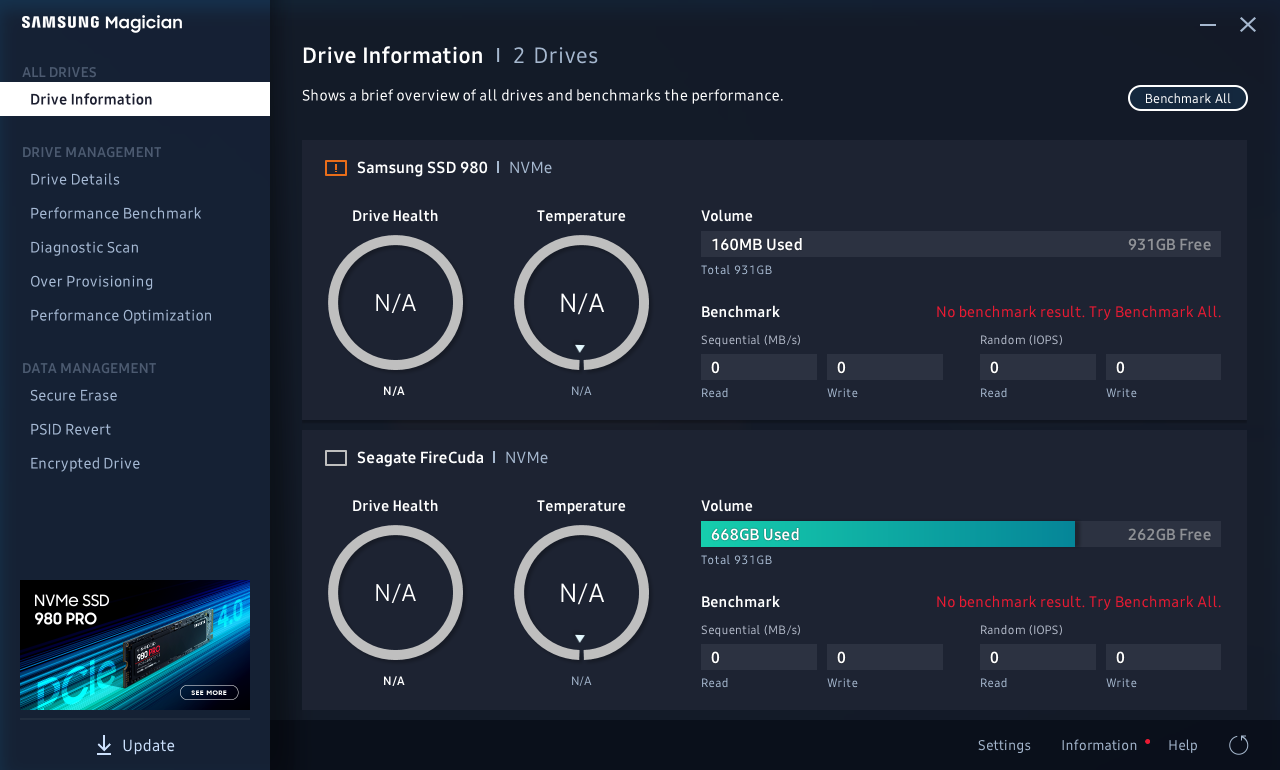
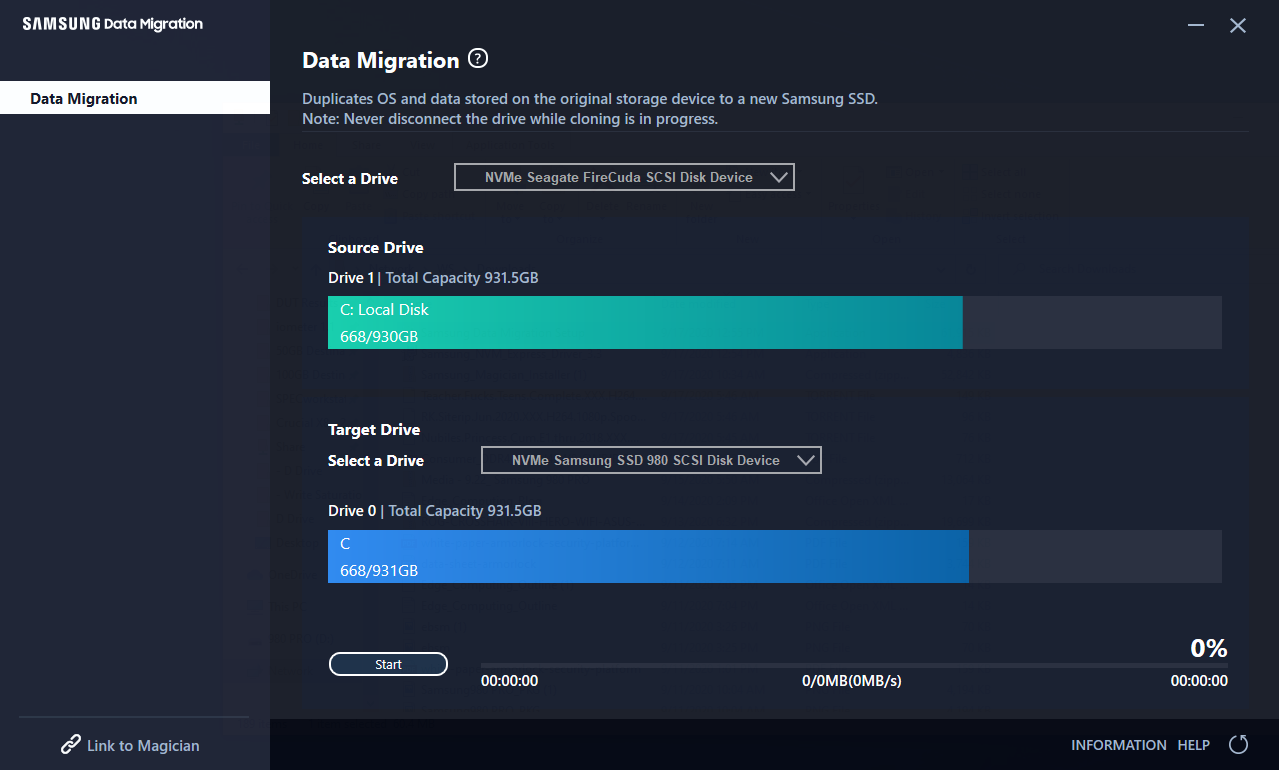
From drive monitoring to benchmarking and security configurations, Samsung Magician leads the market in both SSD Toolbox design and capability. The company also supports NVMe SSDs with a custom driver tuned by the company. And for those who need to migrate their existing data over to their new Samsung SSD, the company provides its Samsung Data Migration Software to clone it over easily.
A Closer Look
Overall, Samsung’s 980 Pro looks to be an overhauled and scaled up 970 EVO Plus. The 980 Pro comes in an M.2 2280 form factor and features a quality black PCB and components. The SKU numbers on the top sticker take away from the aesthetic appeal of the 980 Pro, though. The company could have easily placed these markings on the backside along with the compliance information.
With the 980 Pro's small footprint yet massive performance, the device is bound to generate some heat. To help keep it cool, the company continues to use a copper heat spreader on the backside of the device to help absorb the thermal load when heavy workloads hit. Additionally, the controller features a nickel coating that Samsung says imProves cooling by roughly 7%.
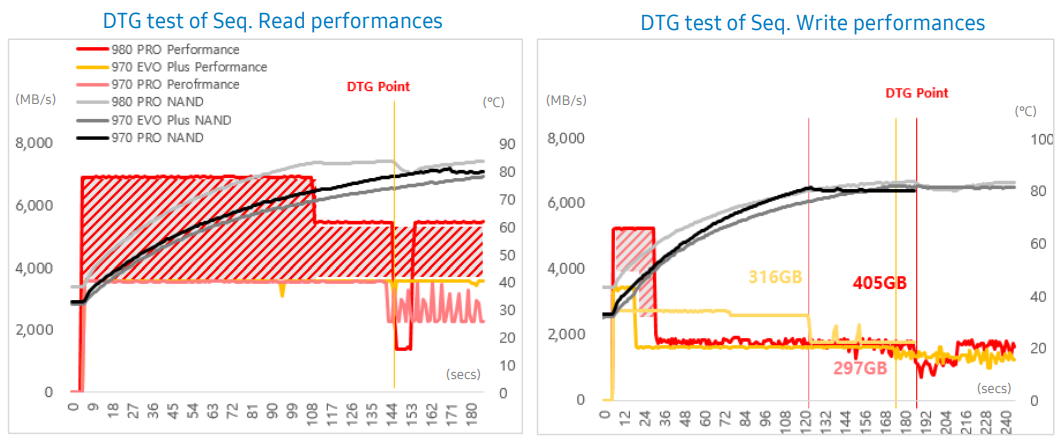
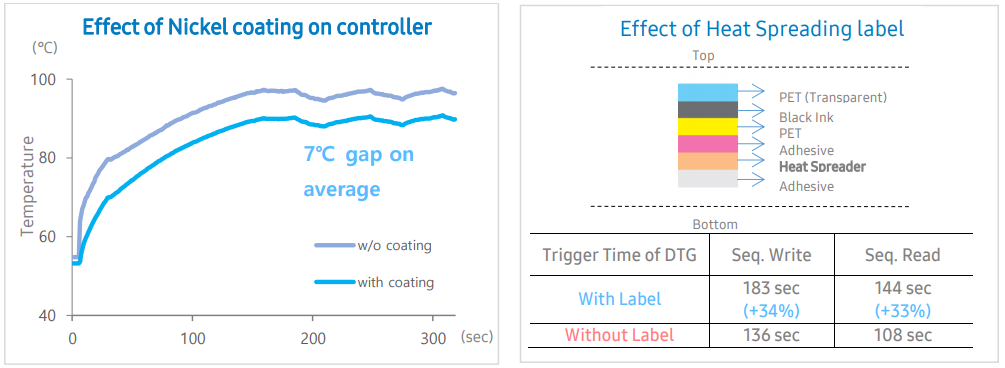
The drive also supports Active State Power Management (ASPM), Autonomous Power State Transition (APST), and the L1.2 ultra-low power mode to regulate overall power consumption, as well as further refinements to dynamic thermal guard (DTG) technology that allows you to write for longer without the device slowing down.
The new SSD controller, dubbed Elpis, measures 16.5 x 16.5mm and features a DRAM-based multi-core Arm architecture built on Samsung’s 8nm manufacturing process node. While the previous-gen Phoenix leveraged five Arm Cortex R5 cores, Samsung hasn’t specified what type of cores, or how many, power this new controller. Samsung also doesn’t specify the channel count, although it’s probably an eight-channel design.
Samsung did mention some other interesting points on the controller’s IO processing capability, however. The company states that the new PCIe 4.0 x4 NVMe 1.3c controller can natively process up to 128 concurrent I/O queues, which is up from 32 queues on the previous PCIe 3.0 controller, leading to a more responsive latency profile.
The 980 Pro leverages DRAM for caching its FTL metadata, and for this task, the company outfitted the SSD with LPDDR4. These DRAM ICs interface at up to 1866 MHz and need as little as 1.1V to operate. The 250GB and 500GB models come with 512MB of DRAM while the 1TB and 2TB receive 1GB and 2GB, respectively.
Over the years, Samsung has led the way in NAND design, and the company’s V-NAND was the first vertical-channel 3D charge trap flash brought into volume production. Samsung’s 1xx-layer V6 V-NAND TLC is the company’s most refined flash yet - it scales the layer count up to new heights and consumes 15% less power than the V5 flash.
Although it hasn’t confirmed, Samsung’s V6 V-NAND reportedly features up to 136 layers, up 40% from the 970 EVO Plus’s 92-layer count. Unlike competing types of 3D flash, Samsung didn’t need to use a multi-stack design to achieve such a high layer count. Instead, the company uses its unique channel hole etching technology to enhance scalability within a single stack. By sticking with a single stack design, the company says it can maintain high-quality production and achieve good yields without the risk of stack channel hole misalignments.
There are just two NAND packages onboard the 980 Pro’s PCB, which applies to all capacities. The 250GB to 1TB 980 Pros come with 256Gb dies while the 2TB model, when available, will feature 512Gb dies. This means that both the 1TB and 2TB models feature 32 dies in total for optimal interleaving and peak performance characteristics. To boost performance, Samsung’s V-NAND features two planes per die (independent regions of die access) for further interleaving.
Competitors like SK hynix and Micron now feature four-plane designs, which doubles parallelism, but this adds to overall periphery circuity, which in turn takes up precious die space. To overcome that die space limitation, most companies use, or are transitioning to, Periphery Under Cell (PUC) or CMOS Under Array (CUA) technology.
| NAND Flash | Samsung V6 V-NAND | SK hynix 4D NAND | Micron | Kioxia BiCS4 |
|---|---|---|---|---|
| Layer Count | 1xxL | 128L | 96L | 96L |
| Bit count per cell | 3-bit / TLC | 3-bit / TLC | 3-bit / TLC | 3-bit / TLC |
| Die density (Gb) | 512 | 512 | 512 | 512 |
| Die area (mm^2) | 101.6 | 63.2 | 81.8 | 86 |
| Bit density (Gb/mm^2) | 5 | 8.1 | 6.3 | 6 |
By placing the additional periphery, page buffer, and other select circuitry under the cell array rather than its border, companies can increase bit density per wafer. Lacking this design component, Samsung’s V6 V-NAND suffers in regards to bit density. Samsung's next-generation V7 V-NAND will most likely implement both multi-stack and Cell Over Periphery (COP) concepts for improvement.
The current design splits each of the two 16kB plane cell arrays into two 8kB sub-planes with even/odd sensing for even faster performance capability with the limited space budget. This, in conjunction with some other modifications like an enhanced bit line precharge scheme, couple-capacitance-minimizing technique, progressive Vth window scheme, and random pre-pulse sensing scheme, enables Samsung’s V6 V-NAND TLC to respond 10% faster to both read and program requests over the last generation of flash. The new flash operates down to 45/450 microseconds (820/82 MBps) read/write, respectively.
Although the company didn’t specify the exact speed that the flash interfaces with the controller at, Samsung specified the flash operates at Toggle DDR 4.0 speeds, which ranges from 800 MTps up to 1,400 MTps, at a 1.2V supply voltage. This most likely matches the speed of SK hynix’s 128-Layer TLC, which is 1,200 MTps.

Sean is a Contributing Editor at Tom’s Hardware US, covering storage hardware.
